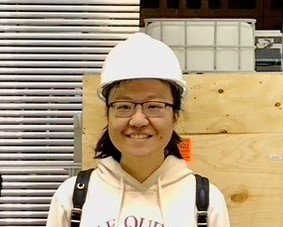Abstract: The NOvA (NuMI Off-axis νe Appearance) experiment aims to answer the outstanding questions in neutrino oscillation physics. As a long-baseline neutrino oscillation experiment, NOvA is primarily designed to measure the muon (anti)neutrino disappearance and electron (anti)neutrino appearance in the off-axis Fermilab NuMI beam. It uses two functionally identical liquid scintillator detectors separated by 810 km and a narrow band beam centered around 2 GeV. The high statistics data in the NOvA near detector can be used to perform precise neutrino interaction cross-section measurements. My analysis is to measure the differential cross section for the muon antineutrino charged-current neutral pion production. While the related neutrino-induced process has several precise measurements, the measurement using the antineutrino mode data is much less studied. It is of particular importance for the oscillation measurements, as energetic neutral pions produced in Delta resonance, deep-inelastic interactions, or final state interactions (FSI) are a significant background to the electron neutrino appearance channel as the photons coming from neutral pion decay may be misidentified as electrons. This analysis uses a convolutional neural network (CNN) trained on individually simulated particles to identify neutral pions in the final state, which is critical for removing bias coming from cross-section model. A data-driven template fit approach is used to constrain backgrounds. The assessment of systematic uncertainties is also presented.
I am also involved in the NOvA test beam program, which uses a scaled-down NOvA detector, exposed to a beam of tagged electrons, muons, pions, and protons, to precisely measure the detector’s muon energy scale and electromagnetic and hadronic response, and further reduce the systematic errors in the detectors. My contributions to MWPC (Multi-wire proportional chamber) system will be introduced.

 The College of Arts
The College of Arts